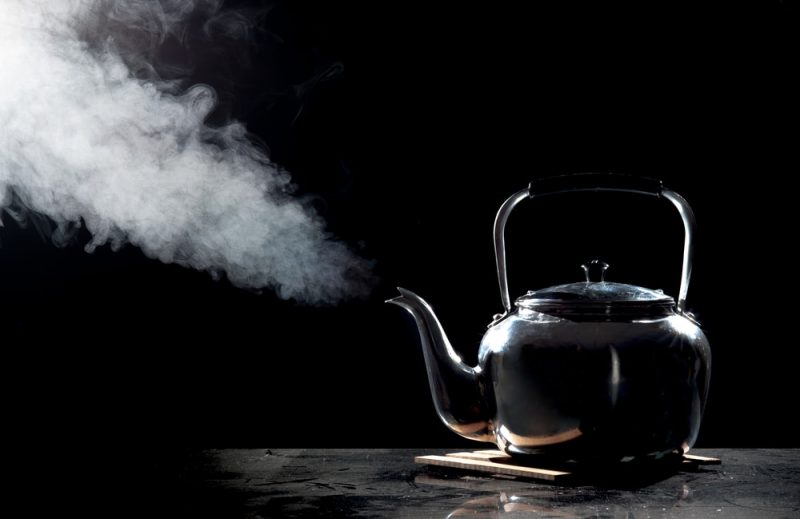The boiling It is the physical process by which molecules in a liquid state reach a temperature point that turns them spontaneously gaseous.
Boiling is the opposite process to condensation and is natural insofar as the sequence of states in which matter can appear has the liquid and the gaseous order consecutively.
The fundamental explanation The process has to do with the fact that in the liquid state, the molecules are constantly moving and are linked together by attractive forces. Thus, when the temperature of a liquid is increased by supplying it with heat, the movement of its molecules increases until, if heat is applied, a point (boiling point) is reached at which this movement is sufficient to cause the particles to from the liquid separate and pass into the vapor phase. Once the liquid temperature reaches the Boiling pointIf heat continues to be applied, the temperature does not increase, since the energy provided by the heat is used in the liquid-gas phase change and not in increasing the temperature of the liquid.
Boiling temperature
The boiling temperature or boiling point is the temperature at which the vapor pressure of a liquid equals the pressure surrounding the liquid.
The boiling point is a characteristic property of each element and chemical compound (it even serves as a reference to identify them). On the other hand, this property depends on the pressure, that is, the boiling point of a liquid at a certain pressure is not the same as at a pressure other than the previous one. For this reason, IUPAC (International Union of Pure and Applied Chemistry) defined the normal boiling point, which is the boiling point, but at the pressure of 1bar. There are boiling points below 0 ° C. For instance: helium has a boiling point of -269 ° C at 1 bar pressure.
Difference with evaporation
On many occasions the concept of boiling is used in a similar way to that of evaporation, since both refer to the passage of a substance from a liquid to a gaseous state.
However, evaporation is a process that occurs slowly and gradually. It can occur at any temperature, since it is generated on the surface of a liquid, while boiling has to do with the change in state of the entire mass of the liquid, and that is why it is directly related to an exact temperature point: all the particles of the liquid have enough energy to pass into the gaseous phase.

Water cycle
The ocean water it evaporates and forms water vapor, which is incorporated into the atmosphere rising and forming clouds, which then cool, condense and produce droplets that fall to the earth in the form of snow, rain or hail.
Examples of boiling
Some examples of boiling points of different elements and chemical compounds are:
- Water boiling process: 100 ºC.
- Boiling point of silver: 2262 ºC.
- Boiling point of neon: -246 ºC.
- Boiling point of nitrogen: -196 ºC.
- Helium boiling point: -269 ºC.
- Boiling point of cesium: 671 ° C.
- Boiling point of titanium: 3287 ºC.
- Boiling point of manganese: 2061 ºC.
- Boiling point of bromine: 59 ºC.
- Boiling point of aluminum: 2467 ºC.
- Boiling point of carbon: 4827 ºC.
- Boiling point of boron: 3927 ºC.
- Cobalt boiling point: 2870 ºC.
- Boiling point of alcohol (ethanol): 78 ºC.
- Boiling point of gold: 2807 ºC.
- Boiling point of phosphorus: 280 ºC.
- Boiling point of xenon, -108 ° C.
- Boiling point of germanium: 2830 ºC.
- Boiling point of calcium: 1484 ºC.
- Nickel boiling point: 2457 ºC.
- Boiling point of krypton: -153 ºC.
- Tungsten boiling point: 5930 ºC.
- Boiling point of copper: 2567 ºC.
- Boiling point of iron: 2750 ºC.
- Boiling point of arsenic: 817 ºC.
- Mercury boiling point: 357 ºC.
- Boiling point of rhenium: 5596 ºC.
- Boiling point of sulfur: 445 ºC.
- Boiling point of lead: 1740 ºC.
- Boiling point of francium: 677 ºC.
